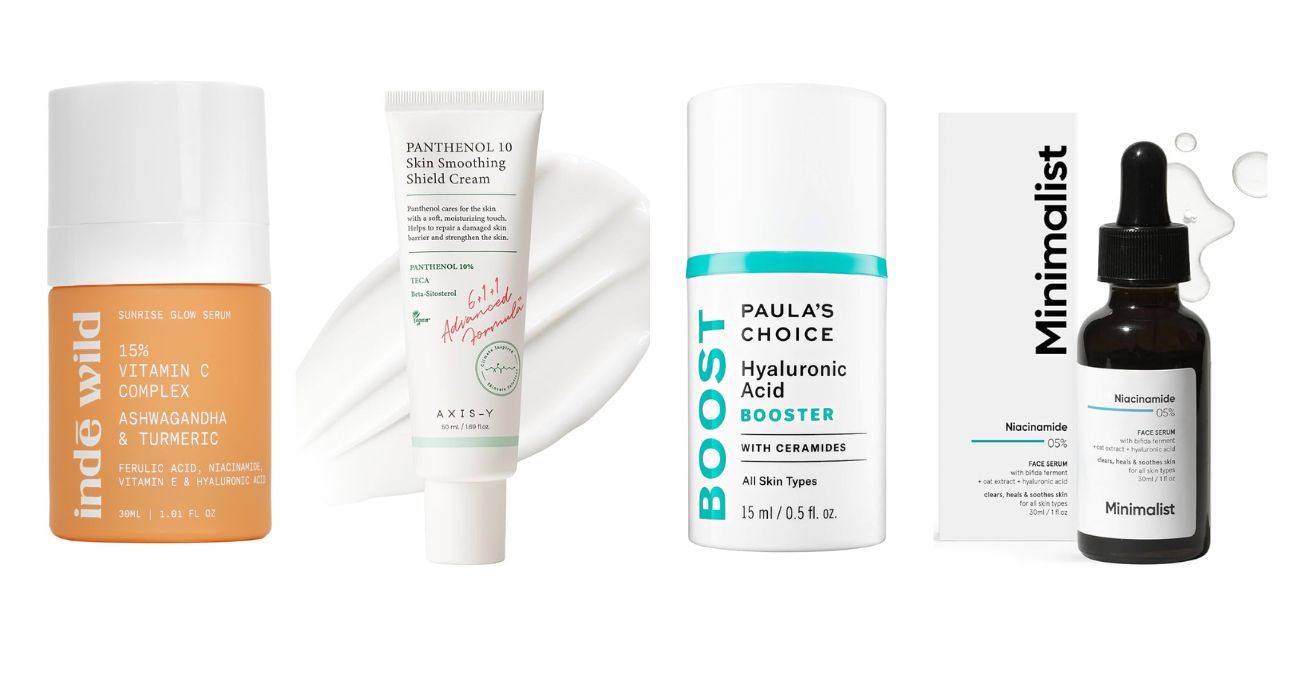Navigating skincare these days can feel like decoding a chemistry equation. With active ingredients and skin-friendly acids being used to formulate skincare products, it’s difficult to understand what your skin needs. Therefore, whether you’re building a basic routine or levelling up to something more targeted, understanding active ingredients is essential. These active ingredients do the heavy lifting by targeting specific concerns like fighting acne, reducing wrinkles, boosting hydration, and everything in between. Here’s your go-to guide on the most effective skincare actives, what they do, and who should be using them.
Hyaluronic Acid
What it does: A hydration magnet. It attracts and retains up to 1,000 times its weight in water.
Best for: All skin types, especially dry or dehydrated skin.
Use it for: Plumping, smoothing fine lines, and keeping your skin barrier healthy.
Retinol (Vitamin A)
What it does: Speeds up cell turnover, boosts collagen, unclogs pores, and reduces pigmentation.
Best for: Oily, acne-prone, or aging skin.
Use it for: Acne, wrinkles, uneven skin tone, and texture. Start slow (1–2x/week) to minimize irritation.
Niacinamide (Vitamin B3)
What it does: A multitasker—reduces inflammation, regulates oil, fades dark spots, and strengthens the skin barrier.
Best for: All skin types, including sensitive and oily.
Use it for: Redness, dullness, large pores, and breakouts.
Salicylic Acid (BHA)
What it does: Exfoliates inside the pores, dissolving oil and dead skin.
Best for: Oily and acne-prone skin.
Use it for: Blackheads, breakouts, and congested pores. Avoid if your skin is very dry or sensitive.
Glycolic Acid (AHA)
What it does: Exfoliates the skin’s surface for smoother texture and brighter tone.
Best for: Normal, combination, and ageing skin.
Use it for: Dullness, hyperpigmentation, and fine lines. It may tingle, use at night and wear SPF during the day.
Ceramides
What it does: Rebuilds and protects the skin barrier by locking in moisture.
Best for: Dry, sensitive, or compromised skin.
Use it for: Redness, flaking, or post-treatment recovery. Often found in moisturizers.
Panthenol (Pro-Vitamin B5)
What it does: Soothes, hydrates, and repairs the skin.
Best for: All skin types, especially sensitive or irritated skin.
Use it for: Calming redness, healing after shaving or exfoliating.
Vitamin C (Ascorbic Acid)
What it does: Brightens skin, fades dark spots, and defends against free radicals (pollution, UV).
Best for: Dull, uneven, or aging skin.
Use it for: Morning routines to enhance glow and protect against environmental stress. Can be drying for some people, use with a rich cream.
Peptides
What it does: Signals skin to produce more collagen and elastin.
Best for: Ageing or tired-looking skin.
Use it for: Firmness, reducing fine lines, and repairing the skin barrier.
Kojic Acid
What it does: Helps lighten dark spots and pigmentation.
Best for: Uneven skin tone, melasma, or dark spots.
Use it for: Targeted spot treatments or serums. Pair with SPF for best results.
Azelaic Acid
What it does: Gently exfoliates, kills acne-causing bacteria, and reduces redness.
Best for: Rosacea, acne-prone, or sensitive skin.
Use it for: Inflammation, acne, post-acne marks, and redness.
Bakuchiol
What it does: A plant-based alternative to retinol; replicates the role of retinol but without irritation.
Best for: Sensitive or ageing skin.
Use it for: Fine lines, loss of elasticity, and uneven tone, especially if you can’t tolerate retinol.
Benzoyl Peroxide
What it does: Kills acne bacteria and clears out pores.
Best for: Acne-prone and oily skin.
Use it for: Active breakouts and preventing future acne. Can be drying, use with caution.
Squalane
What it does: Mimics natural skin oils to give intense moisturisation without clogging pores.
Best for: All skin types, even oily or acne-prone.
Use it for: Hydration, barrier support, and reducing skin tightness or flaking.
Lactic Acid (AHA)
What it does: Gently exfoliates and hydrates simultaneously.
Best for: Dry or sensitive skin.
Use it for: Smoother skin texture and mild exfoliation without irritation.
Zinc Oxide
What it does: A mineral that sits on the skin’s surface to block UV rays.
Best for: All skin types, especially sensitive or acne-prone.
Use it for: Daily sun protection. Great in physical (mineral) sunscreens that don’t clog pores.






